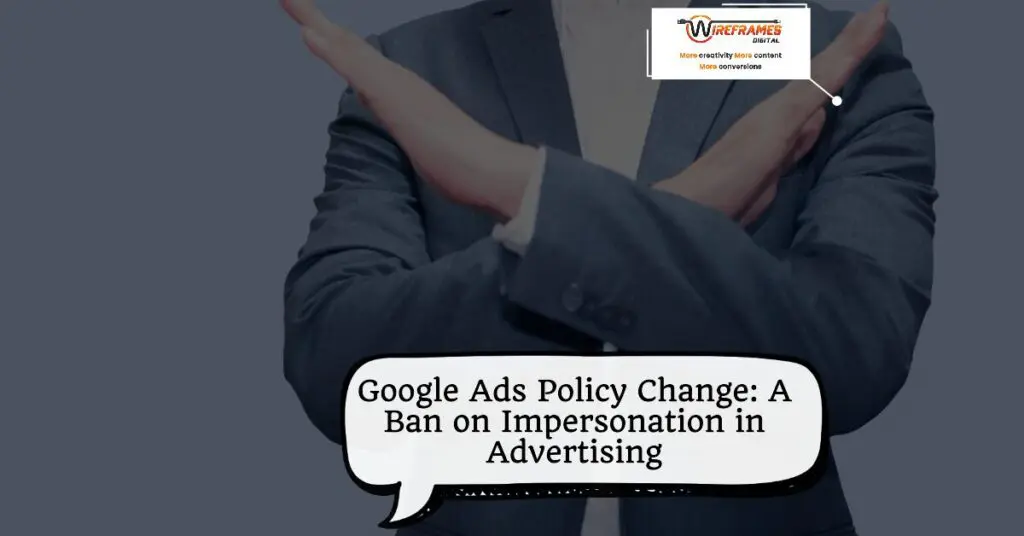Google Ads has long been a battlefield for brands, public figures, and advertisers vying for digital real estate. However, the tides have shifted with Google’s bold policy change to ban impersonation and false affiliations in ads. Effective this March, the search engine giant’s stringent measures are set to revolutionize the digital advertising landscape, placing a premium on authenticity and user trust. Here’s everything you need to know about this critical update and what it means for the future of online advertising.
The Truth Behind Impersonation in Ads
Impersonation as an advertising tactic involves creating an advert that purposely misleads viewers into believing they are interacting with a brand, figure, or entity with which the advertiser has no legal or verifiable affiliation. This manipulation not only deceives users but also tarnishes the integrity of the advertising ecosystem, breeding mistrust and disconnect between consumers and brands.
The Impact on Users and Businesses
Deceptive impersonation in ads can lead to various negative outcomes, including fraud, property infringement, and eroded consumer confidence. For users, the act of being misled can result in economic loss, stress, and a loss of faith in advertising and the platform hosting the ad.
For legitimate businesses, impersonation represents a dual threat: Firstly, it undermines the trust and recognition they have worked so hard to build. Secondly, it leads to a marketplace cluttered with disguised or substandard offers, where authentic brands struggle to differentiate themselves.
Reasons Behind the Ban
The decision to outlaw impersonation in ads is underpinned by Google’s commitment to providing a safe and trustworthy advertising platform. The company’s objective is to ensure that advertisements are transparent and accurately represent the businesses, products, and services they claim to promote.
This move is integral to Google’s broader approach to safeguarding users from false information, along with preventative measures against phishing and other deceptive advertising practices that endanger user safety and well-being.
Navigating the New Terrain: Implications for Advertisers
PPC professionals and marketers are at the epicenter of this policy upheaval, which necessitates a reevaluation of ad content, processes, and performance metrics. With the impending ban, it’s crucial to understand not only what is prohibited but also how to pivot strategies to remain compliant and successful.
Changes in Ad Creation and Management
Ad creation will now demand a heightened level of scrutiny to avoid any semblance of impersonation. This will likely mean a greater emphasis on original, brand-specific content, as well as the reinforcement of brand and legal messaging within ads.
Furthermore, in-depth management of ad content to prevent any slip-ups or unintentional affiliations will be instrumental. Marketers will need to implement more stringent review processes, potentially including legal counsel, to ensure ad compliance with Google’s new directive.
Ad Performance Metrics: A New Path to Success
The repercussions of these policy changes will be felt in the assessment and analysis of ad performance. With impersonation tactics off the table, the focus will shift toward more reliable metrics that reflect genuine user engagement, satisfaction, and trust.
Such a transition presents an opportunity for PPC professionals to redefine success in advertising, advocating for consumer-centric metrics that align with the principles underlying Google’s policy shift.
Creating a Compliance Strategy That Works
For advertisers and business owners, the ban on impersonation in ads implores creativity and diligence in advertisement design. Adopting a proactive stance toward compliance is the surest way to align ad strategies with Google’s expectations while maintaining a compelling and effective online presence.
Compliance with the New Policy
To adhere to the amended Misrepresentation policy, meticulous attention to detail is essential. Advertisers must steer clear of false endorsements or affiliations, refrain from using misleading visuals or branding, and exude transparency in their promotional efforts.
It is recommended to conduct a comprehensive audit of current and upcoming ad campaigns to ensure full compliance. Engaging in clear communication regarding brand identity and offering unmistakable clarity in ad copy are indispensable strategies in the post-impersonation era.
Alternative Approaches to Ad Content and Design
With impersonation tactics outlawed, advertisers must explore more innovative and brand-specific strategies to capture their audience’s attention. Storytelling, originality, and a clear value proposition will become the forefront of ad content, enticing users through authentic narratives and offers.
Additionally, integrating interactive elements into ads can heighten user engagement and foster direct, non-misleading interactions. These include features such as chatbots, 360-degree product views, and interactive experiences that deliver on the ad’s promise without resorting to deceptive practices.
User Education and Awareness: An Imperative
The importance of user education in this policy change is paramount. As advertisers acclimate to the new guidelines, users too must develop a keen eye for identifying deceptive ads. This will require a collective effort across the advertising community to educate users on what constitutes a legitimate and trustworthy advertisement.
Transparency in advertising has never been more essential. Clear disclosures of endorsements, partnerships, and any form of paid promotion will be pivotal in rebuilding user trust and solidifying brand-consumer relationships.
Conclusion: Adapting to an Authentic Future
The ban on impersonation by Google Ads marks a significant shift in the digital advertising domain, one that champions the principles of authenticity, transparency, and user safety. Advertisers and business owners must heed this transformation as an opportunity to refine their advertising ethos, foster genuine connections with their audience, and elevate the industry as a whole.
The road ahead is one of continuous adaptation, creativity, and ethical advertising practices. By embracing these principles, businesses can not only ensure compliance with Google’s policies but also uphold a standard of integrity that resonates deeply with their patrons.
Transforming the digital advertising landscape is no small feat, but with a concerted effort to innovate and adjust, the banning of impersonation in ads can bring about a new age of trust and credibility in online commerce. The task at hand is clear: for brands to succeed in this evolving environment, they must be authentic in their messaging, transparent in their practices, and unyielding in their commitment to consumer welfare.
Summary:
- Google’s Misrepresentation Policy Update: Introduction of a ban on impersonation in advertisements to ensure user safety and prevent misinformation.
- Impact on PPC and Marketers: Requires revising advertisement strategies to comply with the new policy, focusing on authenticity and transparency in ads.
- Changes Required: Advertisers must avoid any form of impersonation and implement rigorous content review processes, emphasizing brand-specific messaging.
- Shifting Ad Metrics: With deceptive tactics off-limits, metrics will now focus on genuine engagement and trust, redefining how ad success is measured.
- Creating a Compliance Strategy: Emphasizing the need for a proactive approach, detailed audits, and transparent communication to align with Google’s regulations.
- Innovations in Ad Content: The policy encourages original storytelling, interactive elements, and clear value propositions to engage users authentically.
- Educating Users: Stresses the importance of user awareness in spotting deceptive ads, with a collective responsibility to educate on trustworthy advertising practices.
- Embracing Authenticity for the Future: The policy change is an opportunity for the industry to uphold integrity, forging more profound brand-consumer trust and setting a higher standard for online commerce.
FAQ – Navigating the Policy Update Successfully
How can I ensure my ads don’t violate the new policy on impersonation?
Stay informed about policy details by regularly reviewing Google’s Misrepresentation Policy guidelines. Create ad content that is genuine and transparent about your brand and its offerings. Avoid any tactics that might mislead or deceive users into thinking your ad represents someone else or another brand.
What immediate steps should I take to protect my Google Ads account from potential policy violations?
Conduct an audit of your existing ads to identify any content that could be considered a violation. Update or remove any ads that do not comply with the new policy. Make sure your future ad campaigns are designed with clear, accurate, and trustworthy information about your products or services.
In the case of inadvertent policy violation, how do I recover my Google Ads account?
If you receive a warning or penalty because of non-compliance, address the issue promptly by reviewing the affected ads and making necessary corrections. Submit an appeal through your Google Ads account with a detailed explanation of the changes made to comply with the policy. Ensure your revisions align strictly with the guidelines provided by Google.
What long-term steps can I implement to maintain compliance and avoid future violations?
Develop a comprehensive understanding of Google’s advertising policies and train your marketing team accordingly. Implement an internal review process to vet ads before publishing. Stay updated on any changes to Google’s policies and adapt your strategies to maintain compliance.
Remember, these steps are meant to help you navigate the changes and operate effectively within Google’s advertising framework without jeopardizing your account’s standing.





















